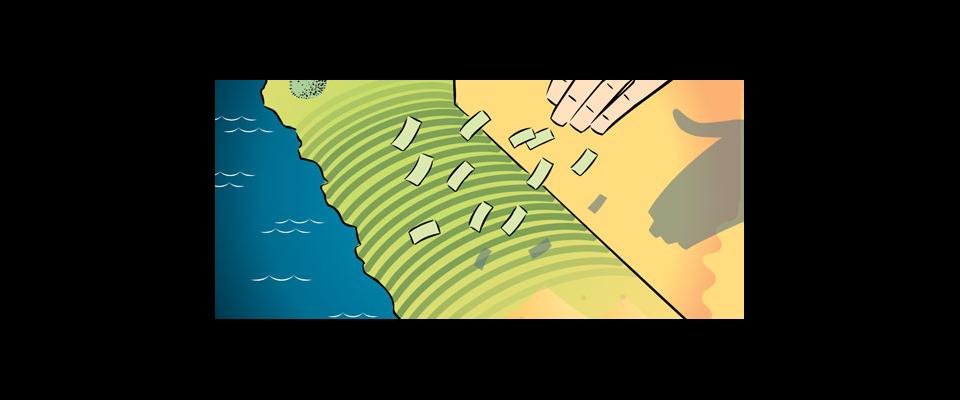Venture capital took root in Northern California thanks to one thing: connections. That web of connections has turned out to be the most powerful renewable resource that California has ever had, spawning a business phenomenon in the late 1980s that relied on private investment and merchant banks, that at its height in 2002 produced 7,812 deals worth $104 billion and made Sand Hill Road in Menlo Park America’s most important startup hub.
In the late 1950s, East Coast banks were flirting with the idea of making investments—not just loans—in new companies. (Digital Equipment Corporation got started with a $70,000 investment in 1957.) Meanwhile in California, a group of blisteringly smart young scientists needed $750,000 to launch a company in the new area of semiconductor electronics. Where to find the money? One of the group—Eugene Kleiner—knew his father had an account with a solid investment firm in New York City. Kleiner wrote a polite letter to the banker who managed his father’s money, describing his friends’ diverse experiences in electronics, metallurgy, and chemistry, and asking for help in securing funding.
The letter wound up on the desk of a colleague, Arthur Rock, a recent Harvard MBA with a keen interest in technology. He flew to California to meet the group. During the summer of 1957, Rock and his colleagues called nearly three dozen companies to try to raise more than $1 million to launch the firm. They were stonewalled. At last, they met millionaire Sherman Fairchild, the single largest shareholder of IBM Corp. With his support, the group started Fairchild Semiconductor Corp., as a division of Fairchild Camera and Instrument, in September 1957. Within 18 months, Fairchild would file for a patent on the integrated circuit.
Fairchild marked the beginning of Silicon Valley, and the first venture deal in Northern California. “If there hadn’t been this deal, I think the [men] would have gone their separate ways and … I don’t think there would have been any silicon in Silicon Valley,” Rock recalled during a 2002 symposium at the Computer History Museum.
The Fairchild incubator would give birth to virtual dynasties of silicon companies and investment firms. Among them: Don Valentine, who worked at Fairchild for seven years, helped start National Semiconductor—and later became one of the Valley’s leading venture capitalists by placing early bets on Apple, Atari, Cisco, Oracle, and Electronic Arts. Eugene Kleiner teamed up with a Hewlett Packard manager, Tom Perkins, to start the venture capital firm Kleiner Perkins. In 1972, Kleiner and Perkins raised the largest venture investment fund the world had ever seen: a whopping $8 million. Amazon, Sun, Genentech, Intuit, Verisign, and Google all owe their starts to KP.
When Berkeley grad Gordon Moore and Robert Noyce, two of the cornerstones of Fairchild, decided to quit in 1968, they called Rock. This time, it took Rock fewer than 48 hours to raise $2.5 million to fund Noyce and Moore’s new company, which they eventually named Intel.
In the 1990s, Kleiner Perkins began promoting the Japanese concept of keiretsu, an interlocking network of companies funded by KP venture capitalists, which share experiences, insights, knowledge, and information. That concept took hold as the zeitgeist of Silicon Valley, as more and more companies were created to complement each other. The populizer of the idea was John Doerr—who got his start at Intel.
Not all webs are perfect, however. Tom Perkins once skipped a meeting with an unknown entrepreneur who seemed to be promoting a “computer kit.” Venture capitalist William Draper sent a colleague to check out the same entrepreneur—and was told that the young man was “arrogant” and late for the meeting. Draper passed on the investment. Instead, it fell to another Fairchild alumnus-turned venture investor— Armas Clifford (“Mike”) Markkula, Jr.— to have the pleasure and the profits of making the pivotal investment in Apple Computer and Steve Jobs.




















